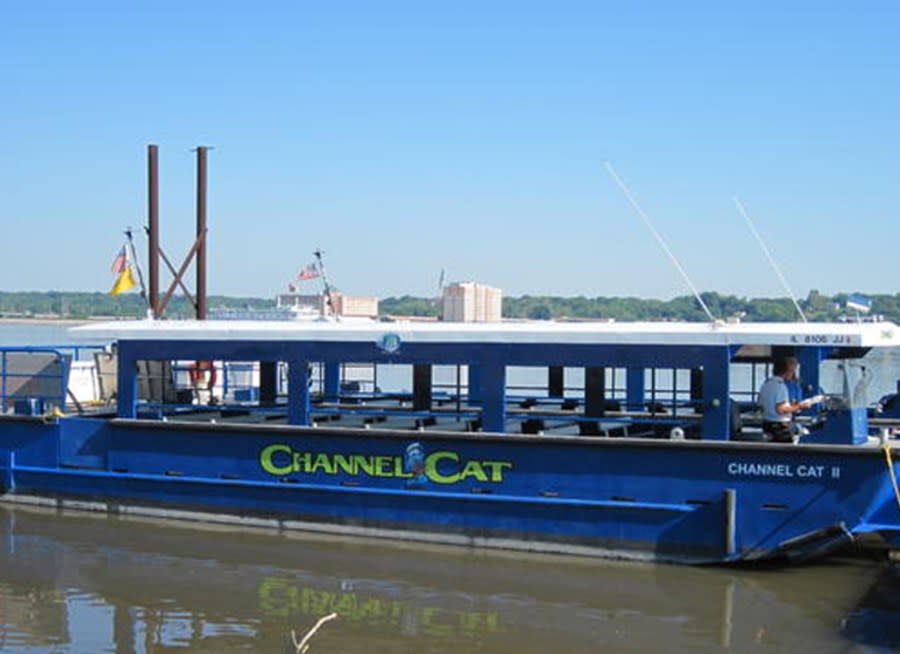Feb. 14—Historic buildings of Spokane have lost one of their greatest advocates.
Architect and developer Richard Ronald “Ron” Wells, who championed dozens of projects that reshaped, preserved and enhanced the character of Spokane’s downtown before bizarre legal troubles derailed his reputation, died Sunday evening. He was 75.
Bill Main, 71, the owner of Re/Max of Spokane, said he’d marveled for years at how Wells and his former wife, Julie, who died in 2023, would attack a particular project.
“I think to be in that business, you have to have a lot of passion and a lot of optimism and maybe disregard, a little bit, for realism,” Main said. “He was very good at that. He had this kind of progressive-visionary attitude.”
Paul Mann, managing partner of the Ridpath, remembered in 1996 when Wells announced a joint project with a venture capital team from Avista to refurbish what’s now known as Steam Plant Square, a series of buildings originally built in 1916.
“I stood next to him on the morning that he announced the Steam Plant project,” Mann said. “It was a cold winter day, and there was a frozen waterfall in the building. It had been closed for a long time.
“I think that’s emblematic of how he could see something for what it could become, or might become, again.”
Main agreed. By his own count, Wells said in an earlier interview that he had been part of about 60 building resurrections throughout the last four decades in the Lilac City.
Main said Mann’s story of the frozen waterfall was a perfect symbol of Wells, the visionary.
“That’s exactly what he would do. He wouldn’t pay attention at all that there was a frozen water pipe. He could see things where a lot of people couldn’t,” Main said of Wells. “That’s why we were so lucky to have him, I think, in Spokane’s downtown.
“That’s what I’m hoping folks remember,” Main continued. “Up until the crazy thing he did, he had so many positive contributions to our community.”
Wells comes north
Born on September 12, 1948, Wells grew up in Asheville, N.C., as an only child of school teachers, according to a 2017 profile published in The Spokesman-Review.
The brick colonial home he grew up in was built by Wells’ grandfather in 1925 on the edge of the Blue Ridge Mountain range.
When he was 17, Wells’ mother died after a prolonged battle with breast cancer.
“Being as close as I was to my mother, and losing her as a senior in high school gave me a real sense of the temporal nature of humanity. She was only 51 years old,” Wells said in 2017. “It made me grow up faster than I would have grown up otherwise.”
Following her death, Wells’ father returned to practicing law, something she had forbidden, and Wells earned a degree in architecture from North Carolina State University.
In 1973, Wells got a call from the University of Idaho with an opportunity “running my own show out there.”
“The university wanted a multidisciplinary team to take students around Idaho, providing them with real world experience while doing a community service in the small towns around the state,” Wells said.
When Wells told his department chair he was leaving teaching to follow his inspirations, his boss wouldn’t accept the resignation.
Within three months, he was offered a $250,000 contract with the Idaho State Historical Society as a consulting historic preservation architect reviewing historic tax credit applications for the state.
“I just kind of stumbled into that. It was a fortunate stumble,” Wells said in the earlier profile. “I was so lucky.”
After several project wins in Boise and other Idaho cities, Ron and Julie Wells in 1983 moved to Spokane.
Main said watching the couple discuss a project was something to behold.
Ron Wells “was very bright. He could go off on these tangents, architectural philosophical tangents. I had no idea what he was talking about,” Main said. “He would get so involved in the project and so excited wanting to see the end that sometimes the financial aspects weren’t his focus.”
But Julie Wells interjected practicality.
“She was an interior designer. I would say Julie was more frugal and more business-oriented,” Main said. “They would get into some pretty heated discussions. The ones they agreed on were highly successful.”
Main ended up partnering with Ron and Julie Wells on the Morgan Building, at 315 W. Riverside Ave. They converted the six-story 1909 building into 32 units now known as the Morgan Lofts.
“It was very unique at the time. As you probably know, Ron was a very unconventional guy,” Main said. “Downtown, in most people’s minds, was kind of a risky, less-than-desirable place to live. We sold out quickly. It’s changed a lot since then.”
Ron and Julie Wells divorced about a decade ago, after Ron Wells began one of his greatest fetes: the unraveling of the legal mess that had embroiled the Ridpath Hotel.
Felony charges
Just as Ron Wells, Paul Mann and others were nearing the yearslong battle to convert the hotel into apartments, Ron Wells ended up in federal court.
In 2018, Ron Wells and 21 other defendants were indicted for staging a “series of automobile, boating, stair fall, pedestrian/vehicle and other accidents” in Washington, Idaho, Nevada and California from 2013 to 2018, according to court documents.
In total, the group was alleged to have defrauded insurance companies of more than $6 million. Ron Wells was sentenced for nine felonies for staging car accidents and money laundering.
Just months after Ron Wells pleaded guilty in 2019, he nearly died.
After undergoing bariatric surgery in August 2019, he suffered a ruptured colon and went into a coma. He then had to learn how to walk again, which he did into court in 2020 when U.S. District Court Judge Thomas Rice sentenced him to a year of home detention.
In April 2023, after serving his sentence, Ron Wells granted an interview about how proud he was of Mann and how the Ridpath had finally achieved full occupancy.
“I had a period there where I was really not able to function,” Ron Wells said. “I could never retire from this. I’m looking for another project.”
But he filed for Chapter 13 federal bankruptcy in August 2023, declaring assets of about $3.1 million and liabilities of between $1 and $10 million, including an unspecified amount to the Internal Revenue Service.
Aaron Taylor, 40, who said he has been Ron Wells’ caregiver and best friend since 2017, said he was not sure why he filed for bankruptcy.
Despite his health problems in 2019, the innovative developer had been improving. Taylor said he left Ron Wells napping on Sunday evening, when he apparently died in his sleep.
Taylor said he discovered him Monday morning.
On Wednesday, Taylor traveled to downtown Spokane for lunch.
“I could feel him everywhere,” Taylor said, “because his touch is on every building that is significant in downtown.
“Everything he put his mind to and his passion to, he did so with a vigor that most people wouldn’t even understand,” Taylor said. “He was a force of nature. He did things and lived his life to the fullest.”
Signup bonus from




